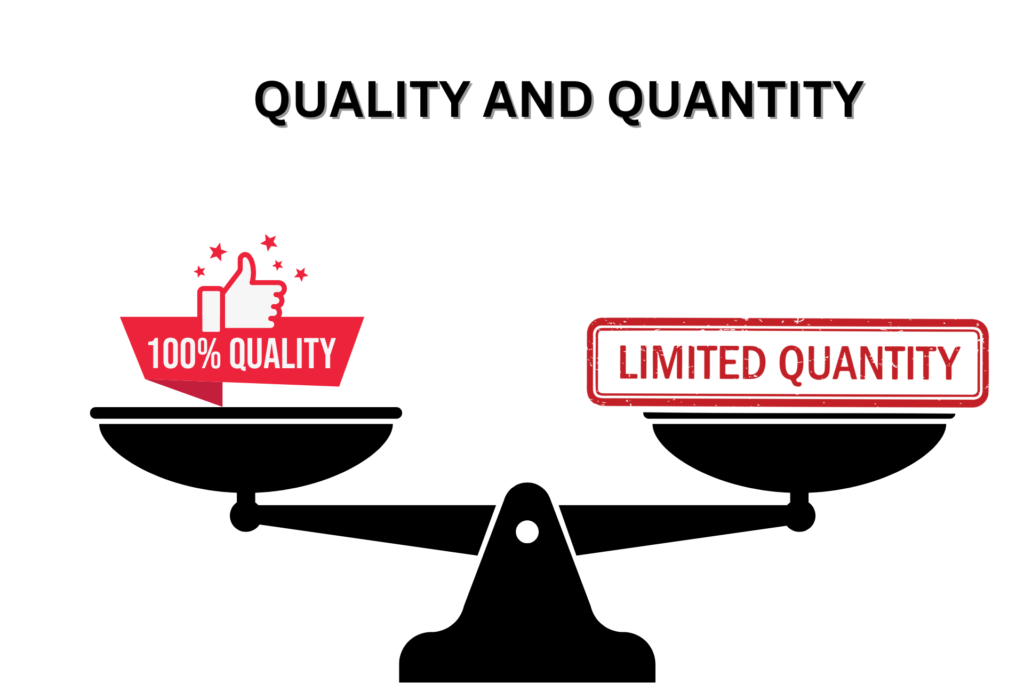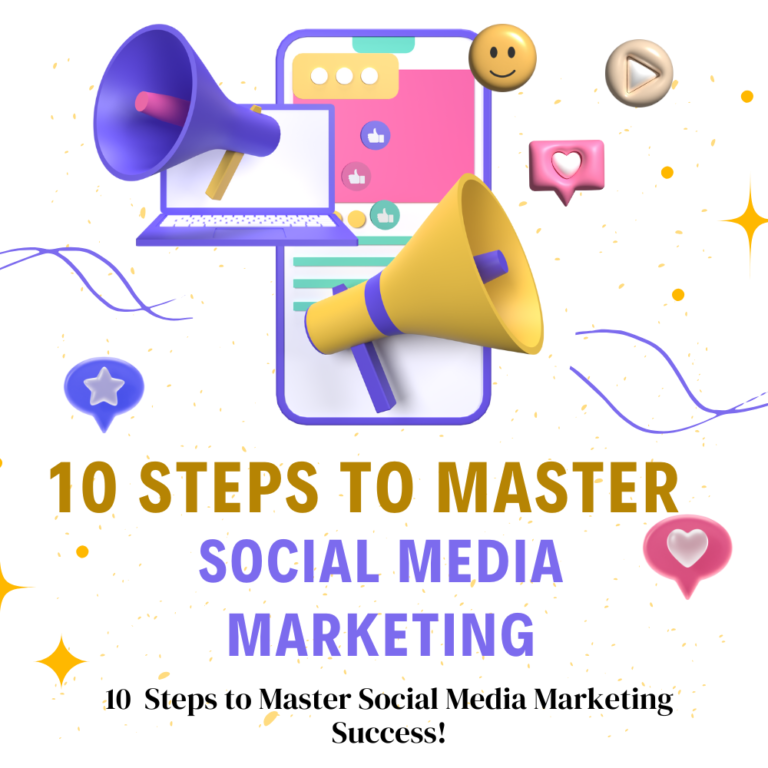How Social Media Marketing Works: A Simple Guide
What is Social Media Marketing
Social media marketing involves using social media platforms to promote a business, brand, or product. It includes creating and sharing content—like posts, images, and videos—to engage with an audience and build relationships.
By utilizing platforms such as Facebook, Instagram, and Twitter, businesses aim to increase brand awareness, drive website traffic, and boost sales.
This strategy allows companies to connect with their audience in a personal and interactive way, making it a vital aspect of modern marketing.

Why Social Media Marketing Matters Today
Imagine a world where you can interact with potential customers in real time, respond to their queries, get immediate feedback on products, and understand their preferences without even leaving your office.
That’s the world social media marketing offers. As of October 2024, nearly 5.22 billion people worldwide actively use social media, meaning businesses today have a massive, engaged audience right at their fingertips.
One of the key advantages of social media marketing is the ability to interact directly with consumers, fostering strong relationships.
What makes social media unique compared to other marketing channels is its two-way communication.
Businesses don’t just talk at their audience; they talk with them. This approach builds community, fosters trust, and creates a loyal customer base that feels more like a group of friends than a list of potential buyers. But how does a business get started in creating such a bond?
How Algorithms on Social Media Shape Our Content Exposure
One of the most important things to understand in social media marketing is the role of algorithms.
These algorithms are the gatekeepers to an audience’s attention, controlling what appears in users’ feeds. While each platform has unique algorithmic rules, they generally prioritize content based on several key factors:
- Engagement: Posts with higher likes, comments, shares, and reactions are often shown to a larger audience. If people are engaging with a post, it signals to the algorithm that the content is valuable.
- Relevance: Algorithms track user behavior—like their past interests and interactions—to show content that aligns with what they care about most.
- Recency: Fresh content is more likely to appear in feeds, making it essential to post consistently and strategically.
- Relationships: Content from friends, family, or frequently interacted-with accounts gets a higher ranking since social media platforms value personal connections.
Facebook, for instance, uses thousands of signals to decide which posts appear in a user’s news feed.
By analyzing patterns in what we interact with, it tailors our experience, showing posts that it believes will hold our interest.
For businesses, understanding these dynamics can guide the development of content strategies that boost visibility and engagement.
Crafting a Social Media Strategy: Key Elements Every Business Needs
Effective social media marketing isn’t about flooding feeds with sales posts; it’s about strategically crafting and delivering valuable content. Here’s how to build a foundation:
1. Define Clear Goals
Before making any content, ask yourself: What do I want to accomplish?
Are you looking to increase brand awareness, drive traffic to your website, generate leads, or perhaps all three?
Different goals may require different strategies. For instance:
- Brand awareness might mean creating engaging, shareable content.
- Lead generation could involve more targeted ads.
- Community building requires regular, two-way communication with followers.
Defining clear goals allows businesses to allocate resources effectively and maximize the impact of their social media marketing initiatives.
2. Know Your Audience
Every audience has its own social media habits and preferences.
A fashion brand, for example, may find that their target audience spends time on visually rich platforms like Instagram and Pinterest, while a B2B tech company might find more value on LinkedIn and Twitter.
Understanding your audience is essential for effective social media marketing, as it allows you to create content that resonates with them.
Modify content to the platform and demographics of your target audience to maximize engagement.

3. Craft Engaging Content
Interesting content is key to success in social media marketing.
No matter if you’re using images, videos, or text, ensure your content is:
- Relevant: It should align with what’s meaningful to your audience.
- Valuable: Provide information, insights, or entertainment that your audience will find useful.
- Visual: With attention spans shrinking, images and videos tend to perform better than text alone.
- Interactive: Polls, quizzes, and questions encourage engagement and help build community.
4. Understand the Power of Consistency
One of the biggest factors in growing a brand on social media is consistency.
Posting frequently and at optimal times increases the chances that your audience will engage with your content.
This doesn’t mean bombarding followers with posts but developing a content calendar that provides a steady stream of valuable posts.
To achieve long-term success in social media marketing, businesses must focus on consistency in both content quality and posting frequency.
Getting to Grips with Paid Social Media Advertising
When it comes to expanding reach, organic posts alone may not be enough—especially on saturated platforms like Facebook and Instagram, where paid advertising can provide a significant boost.
Implementing effective social media marketing techniques can significantly boost brand awareness and visibility.
Paid ads allow businesses to reach specific audiences based on demographics, interests, and even online behaviors.
Here’s a look at some popular types of paid social ads:
- Sponsored Content: Appears directly in users’ feeds and often resembles a regular post, making it less intrusive.
- Carousel Ads: Let you showcase multiple images or videos in a single ad, ideal for displaying various products or different features of a single product.
- Video Ads: Short, impactful video ads are especially popular on platforms like Instagram and TikTok, where visual content reigns.
- Lead Generation Ads: Designed specifically to capture information, these ads include forms for users to fill out without leaving the platform.
Targeting is where social media ads really shine. With advanced targeting options, you can define your ideal audience by age, location, interests, purchasing behaviors, and more.
Platforms like Facebook and Instagram even allow for retargeting, where ads are shown to people who have previously interacted with your brand.
Building a Community, Not Just an Audience
A strong social media presence is about more than numbers.
Your followers are real people, and building genuine connections with them can set your brand apart.
This is often referred to as “social listening”—actively seeking out and responding to customer feedback, questions, and even complaints.
Engaging with your community on social media not only boosts your Social media marketing efforts but also helps in gathering valuable feedback from your audience. When people feel understood, they are more likely to be loyal.
Techniques for Building a Community
- Respond to Comments and Messages: Being responsive not only builds goodwill but also boosts engagement rates, signaling to the algorithm that your content is valuable.
- User-Generated Content (UGC): Inspire your audience to generate content that reflects their experience with your brand. UGC serves as social proof and can broaden your reach when followers share your posts.
- Use Polls and Q&A Sessions: Platforms like Instagram and Twitter allow you to host interactive sessions, where followers can vote on polls or ask questions. This strategy promotes interaction and helps keep your brand in the spotlight.
Evaluating Your Social Media Success
Finally, measuring performance is essential to understanding what works and where improvements are needed.
Social media platforms offer built-in analytics that can help you track important metrics like:
- Reach: The total number of different users who view your content.
- Engagement Rate: A measure of the likes, comments, shares, and interactions your content receives.
- Click-Through Rate (CTR): How many people clicked on a link within your post.
- Conversions: If you’re running ads, tracking conversions can show you how many people completed a desired action, like making a purchase or signing up for a newsletter.
Advanced Social Media Strategies to Boost Engagement and Reach
As your social media presence grows, so do your goals. To keep engagement high and audiences excited, consider using advanced strategies to optimize results and stay ahead of competitors. Let’s break down some proven methods.
1. Leverage Influencer Marketing
Influencer marketing allows brands to partner with social media personalities who have a loyal following.
The concept is simple: influencers promote your product or service to their audience, lending your brand their credibility and trust.
This approach is particularly useful for engaging niche markets. Here are some influencer types to consider:
- Nano and Micro-Influencers: With followers under 50,000, these influencers have highly engaged audiences and offer a more cost-effective option.
- Macro and Mega-Influencers: With larger followings, these influencers have broader reach but may be more expensive and less personalized.
Influencer marketing campaigns can be as simple as product reviews or as immersive as takeover events where influencers manage your brand’s account for a day.
Influencers play a crucial role in social media marketing, as they can effectively promote products to their engaged audiences.
However, it’s essential to choose influencers whose values align with your brand to create authentic, impactful content.

2. Utilize Social Media Stories and Reels
Stories and Reels on platforms like Instagram, Facebook, and TikTok are short-lived, but they’re excellent tools for staying visible.
Stories allow you to post updates, behind-the-scenes content, and promotions without cluttering the main feed.
Reels, on the other hand, provide the opportunity to create short, engaging videos that can reach a broad audience organically due to their high visibility on platforms’ Explore pages.
By creating compelling media content through stories and reels, businesses can enhance their social media marketing and reach a broader audience.
Using features like polls, stickers, and swipe-up links (for accounts with over 10,000 followers) enhances interactivity and boosts engagement. A good mix of product showcases, tutorials, and user-generated content keeps stories and reels fresh and informative.
3. Focus on Retargeting Ads
Retargeting ads are one of the most powerful tools in social media advertising. These ads target people who have previously interacted with your brand, whether by visiting your website, watching a video, or adding a product to their cart.
Retargeting allows you to maintain brand presence in a subtle but powerful way, reminding potential customers of their interest in your product or service.
To execute this effectively, set up Facebook Pixel or other tracking codes on your website.
This data allows you to segment users and target them with relevant ads, such as discounts for abandoned carts or notifications about new product launches, to re-engage them.
4. Experiment with User-Generated Content Campaigns
User-generated content (UGC) campaigns invite your followers to produce and share content connected to your brand.
Whether it’s a hashtag challenge, a photo contest, or testimonials, UGC campaigns generate buzz, foster community, and act as social proof for your brand.
To encourage participation, create a branded hashtag, offer prizes or features on your page, and engage with each submission.
GoPro and Coca-Cola have famously executed successful UGC campaigns, transforming their customers into brand advocates.
With the rise of user-generated content, social media marketing has become a powerful tool for building community and trust.
Handling Social Media Challenges
With so much potential comes some level of difficulty. Here are the primary challenges social media marketers face and strategies to overcome them.
1. Keeping Up with Constant Algorithm Changes
Social media algorithms are constantly evolving, impacting how and when your content is seen. The secret to tackling this challenge lies in being adaptable.
Pay attention to platform updates, attend industry webinars, and follow social media marketing experts to stay informed.
To buffer against algorithm changes, diversify your social media strategy. Relying too heavily on a single type of content or platform makes you vulnerable to shifts in the algorithm.
A healthy mix of organic posts, paid ads, stories, and live sessions gives your brand more flexibility.
2. Managing Negative Feedback
Negative feedback is inevitable, but how you handle it can make or break your brand’s image. Approach criticism with a calm, professional tone.
Acknowledge concerns, offer solutions, and avoid getting defensive.
Negative comments offer insight into potential improvements, and addressing them publicly can show that your brand is attentive and customer-focused.
If a customer continues to be disruptive, consider addressing the issue privately through direct messaging. Handling sensitive matters this way helps prevent an online debate while demonstrating your willingness to assist.

3. Balancing Quality with Quantity
Posting consistently is essential, but quality should never be sacrificed. Strive for a schedule that’s manageable without compromising the value of your content.
A simple yet effective rule of thumb is the 80/20 rule: 80% of your content should be informative and engaging, while 20% can be promotional.
This balance keeps your audience engaged without feeling like they’re being sold to constantly.

4. Avoiding “Social Media Burnout”
For social media marketers, burnout can become a reality. Constantly creating, posting, and engaging can be exhausting, so prioritize time management and use tools like content scheduling and automation to streamline your process.
Batch-creating content and scheduling it in advance can free up time for engaging with followers and tracking performance, reducing the risk of burnout.
Tips for Creating Compelling Social Media Content
Here are some practical tips to ensure your social media content is as engaging and effective as possible:
- Stay Informed About Trends: Social media trends can change at a fast pace. Utilize trending hashtags, audio clips, and formats to make your content more relatable and discoverable.
- Be Authentic: Authenticity wins on social media. Be transparent about your brand’s values, mission, and journey to foster trust with your audience.
- Utilize Data-Driven Insights: Use platform analytics to understand what content performs best and refine your approach based on data. For instance, if engagement is higher on a specific type of post, consider creating more of that content.
- Create Visual Consistency: Consistent visuals make your brand recognizable. Choose a color palette, filters, and fonts that align with your brand identity and use them consistently across all posts.
- Use a Call-to-Action (CTA): Every post should have a clear objective, whether it’s to comment, share, or visit your website. Clear CTAs help your audience understand what actions to take next.
Crisis Management in Social Media
Social media is incredibly public, meaning that any crisis, big or small, can quickly escalate. Whether it’s a PR issue, technical mishap, or misunderstanding, responding quickly and professionally is essential.
- Prepare a Crisis Plan: Define roles within your team for responding to different types of issues and have pre-written responses on hand for common crises.
- Acknowledge Quickly: When a crisis arises, address it as soon as possible. Silence or delays can worsen the situation, leading to speculation and frustration.
- Show Empathy: Show that you recognize and value your audience’s concerns. Apologize if necessary and communicate the steps you’re taking to resolve the issue.
Evaluating the Effectiveness of Your Social Media Approach
Once your strategy is in place, it’s time to measure its effectiveness.
Regular analysis helps refine your approach and ensure resources are well-spent. Here are a few critical metrics to track:
- Engagement Rate: Engagement rate includes likes, shares, comments, and reactions, which indicate how well your content resonates with your audience.
- Conversion Rate: For campaigns aimed at generating leads or sales, the conversion rate tracks how many users completed a desired action.
- Follower Growth: Steady growth indicates that your content attracts new followers, while declines may signal the need for a strategic shift.
- Return on Investment (ROI): Calculate the ROI of your social media campaigns to ensure your efforts lead to tangible business growth.
The Future of Social Media Marketing
Social media marketing is continuously evolving, and future trends will likely focus on increasing personalization, interactive content, and AI-driven analytics.
Staying adaptable and keeping customer engagement at the core of your strategy will ensure your brand remains competitive in this fast-paced landscape.
As businesses of all sizes dive into social media, understanding its mechanics, challenges, and opportunities becomes essential.
A well-executed social media marketing strategy not only boosts brand awareness but also builds lasting relationships that fuel business growth.
Ready to make your mark on social media? Start by implementing these strategies, experiment with new approaches, and keep your audience at the heart of every campaign. The digital world awaits. Start your journey today.







